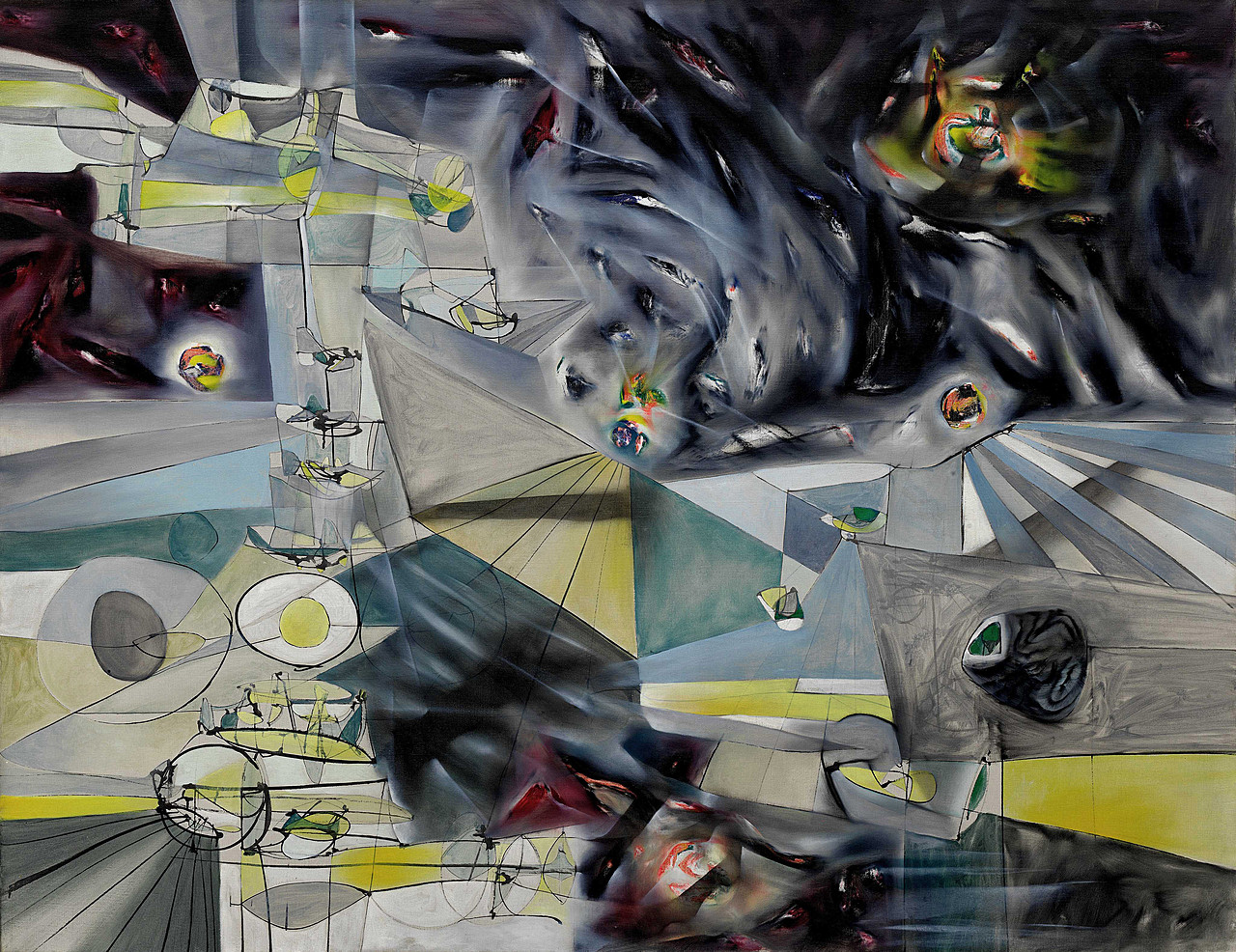Schooled as an architect in his native Santiago, Chile, Matta went to Paris in 1933 to work for the famed modernist architect Le Corbusier. By the mid-1930s, Matta had become friendly with members of the Surrealist circle, and in 1937, influenced by both Surrealist techniques, including automatism, and his architectural training, he left Le Corbusier’s atelier to focus on art. In 1939, Matta fled Europe for New York, where he maintained contact with Surrealist colleagues who also sought refuge in the United States during World War II. In addition, he forged new relationships with many of his contemporaries in the nascent New York School—among them, William Baziotes, Arshile Gorky, Robert Motherwell, and Jackson Pollock—and he introduced them to Surrealism firsthand.
While his paintings were sometimes nonobjective, Matta often depicted landscapes conjured from the unconscious that resemble cosmic locales like those popularized by science fiction. He used the terms “inscapes” and “psychological morphologies” to describe these works, which he considered to be maps of the mind or spaces that exist beyond human perception. He developed a technique that involved the use of rags, sponges, and brushes to build up layers of pigment, which he would rub away in various places, thereby uncovering new forms. The physical transformation brought on by this process alluded to the concepts of change and metamorphosis, which are fundamental to his art.
Matta continued to develop this approach in paintings of the 1940s such as Years of Fear (1941), which explored the timely topics of anxiety and destruction. Its abstract, allover composition lacks traditional indications of spatial orientation such as a horizon line, yet it still reads as a landscape. The swirling, dark cloud in the upper right corner is formally suggestive of such cataclysmic events as a volcanic eruption, war or apocalypse, themes that reflected the devastating events unfolding in Europe at that time. He contrasted this expressive aspect of the work with a more rational one, manifest in areas of pure color demarcated by lines and rendered in a more soothing palette of blues, grays, and yellows. The formal tension between logic and emotion parallels the implied struggle on the interior, psychic battlefield to conquer both personal fears and the terror brought on by World War II.
Valerie Hillings
